In this era characterized by cutting-edge technology and rapid evolution, it has become nearly indispensable for companies to maintain continuous competitiveness. It is crucial for meeting the advanced technological demands of contemporary clients. However, the stark reality of digital competitiveness is that organizations must have exceptional development teams to thrive. New programming languages and technologies frequently emerge in the tech landscape, making detecting and embracing them vital for success.
Have you ever thought about how you can consistently assemble a development team with the appropriate composition and size?
How can you efficiently adopt new technologies and tackle current challenges, especially when IT recruitment is both cumbersome and costly?
The solution to this challenge lies in staff augmentation from a top mobile app development company in London. IT staff augmentation involves expanding your in-house team by outsourcing the necessary talent.
This article delves into the concept of staff augmentation, its various models, and how you can engage offshore developers by selecting the suitable augmentation model.
What is IT Staff Augmentation?
IT staff augmentation is a strategic business tactic. It involves temporarily bringing in external IT experts or specialists to enhance your internal team’s skills, knowledge, and capabilities. Staff augmentation services enable you to harness the advantages of a hybrid approach. Your team comprises both internal staff members and top-tier professionals contracted from external agencies. Since the trend of IT staff augmentation is surging, it empowers organizations to augment their staff from anywhere globally.
What Are The Different Types of IT Staff Augmentation?
Well, there are three primary approaches to IT staff augmentation in London, UK:
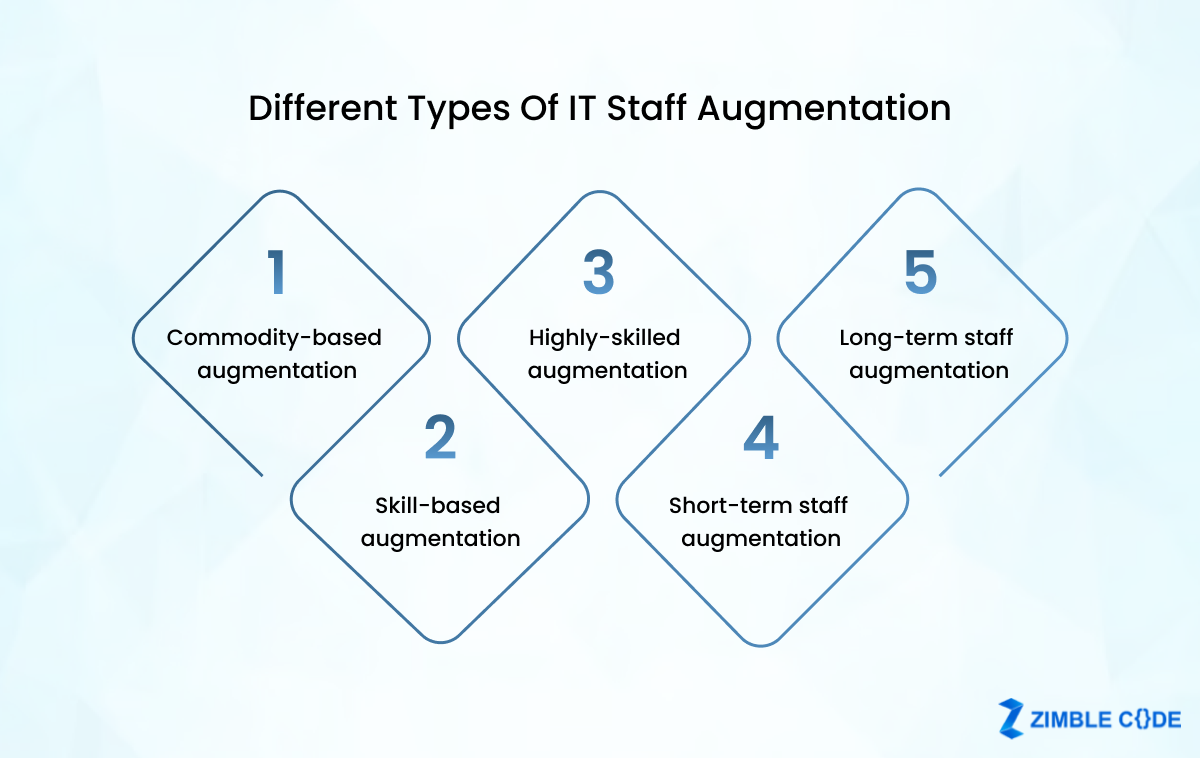
- Commodity-based Augmentation: This method involves adding more staff to a business, typically employees with basic skills to fulfill essential tasks. It is used when there is an urgent need for an additional workforce or when positions that do not require advanced skills need to be filled quickly.
- Skill-based Augmentation: Often, organizations hire skilled professionals with higher levels of education and experience than average workers. These individuals can complete tasks more efficiently and may possess specialized skills not readily available within the company, making them valuable assets.
- Highly-skilled Augmentation: This category involves hiring exceptionally skilled individuals from external organizations for specific projects within your organization. They are brought in for tasks that demand expertise, such as developing new products or resolving complex issues with existing ones.
Additionally, staff augmentation can also be categorized based on duration:
- Short-term staff augmentation: Involves bringing in temporary employees to assist with specific tasks or projects. For instance, hiring an intern to aid with design elements for an ad campaign. These arrangements are typically project-based and of short duration.
- Long-term staff augmentation: Occurs when an organization hires someone for an extended period, often a year or more. This happens when an employee’s skills have become indispensable to the business, and their presence is needed for extended periods.
These various forms of IT staff augmentation offer flexibility in tailoring the workforce to meet specific project requirements and business needs.
How can Staff Augmentation Help Your Business?
Determining the appropriate circumstances for increasing your headcount is a critical decision. Below are five scenarios where staff augmentation can be highly advantageous for your business:
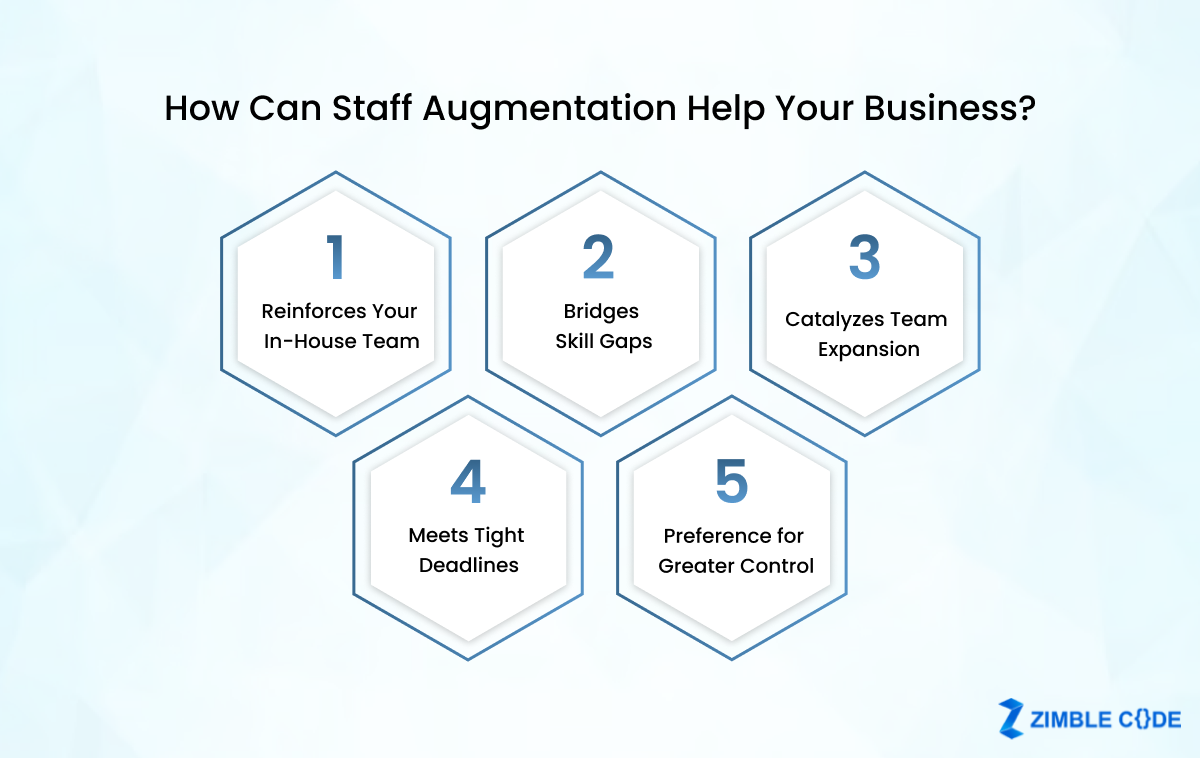
- Reinforces Your In-House Team: When launching a new product or a fresh project, it is essential to complement or enhance your existing expertise. It worked wonders, even if you have an in-house team of software developers.
- Bridges Skill Gaps: Your company may simultaneously manage multiple projects, demanding distinct skills in various specialties. Staff augmentation allows you to bring in developers with specialized skills, eliminating the loss of time, resources, and finances.
- Catalyzes Team Expansion: Finding a local developer with deep knowledge in areas such as IoT, Dart, or software development can be time-consuming. Staff augmentation streamlines this process, saving time on recruitment. You must engage with a vendor, evaluate the developer’s credentials, and conduct interviews.
- Meets Tight Deadlines: The hiring process is typically lengthy, spanning from job posting to onboarding. If time constraints are a concern, staff augmentation offers an effective means to expand your IT team swiftly. It grants immediate access to a global pool of software developers from across the globe.
- Preference for Greater Control: Staff Augmentation can be the ideal choice when you require more control over a developer’s work and aim to manage their workload personally. Seamlessly integrating software developers into your team allows you to maintain a higher level of control while they contribute to your business.
How Can You Engage Offshore Developers By Selecting The Right Augmentation Model?
Strategically engaging offshore developers involves aligning your project’s specific requirements with the available augmentation models. Below is a comprehensive guide on how to accomplish this successfully:
- Assess Your Project Requirements:Begin by identifying the precise skills, expertise, and experience necessary for a successful project execution. Consider factors such as project duration, complexity, and scalability needs.
- Define the Augmentation Model:Determine the augmentation model that best suits your project. Depending on your project’s nature and expertise demands, options include commodity-based, skill-based, or highly-skilled augmentation.
- Identify Offshore Developers:Conduct research to locate offshore developers or development firms specializing in the skills and technologies your project requires. Look for reputable companies with a track record of successful projects and positive client feedback.
- Review Portfolios and Credentials:Evaluate potential offshore developers’ or teams’ portfolios, credentials, and past work. Assess their expertise, project experience, and the quality of their deliverables to ensure alignment with your project’s requirements.
- Conduct Interviews and Assess Cultural Fit:Schedule interviews or meetings with offshore developers to evaluate their technical abilities and compatibility with your organization’s culture. Effective communication and collaboration are essential for remote team success.
- Negotiate Terms and Contracts:Clearly define terms, expectations, and contracts with the offshore developers. Discuss project scope, timelines, milestones, payment structures, and any other relevant details.
- Establish Communication Protocols:Establish effective communication channels and protocols to facilitate seamless collaboration with the offshore team. Utilize project management tools to maintain connectivity and keep all parties informed.
- Implement Agile Practices:Embrace agile project management methodologies to maintain flexibility and adaptability throughout the project’s lifecycle. Regularly review progress, provide feedback, and make adjustments as necessary.
- Monitor and Manage Performance:Continuously monitor the performance of offshore developers. Keep track of project progress, work quality, and adherence to deadlines. Address any issues or challenges promptly to maintain project momentum.
- Cultivate a Strong Relationship:Foster a robust working relationship with the offshore team by encouraging open communication, trust, and collaboration. Engage in team-building activities to unite in-house and offshore groups in alignment with project goals.
- Evaluate and Iterate:After project completion, assess the performance and outcomes achieved by offshore developers. Gather feedback from your in-house team and identify areas for improvement in future engagements.
You can effectively engage offshore developers by following these steps and selecting the appropriate augmentation model.
Conclusion
Undoubtedly, the process of bringing in new talent can be quite arduous, and the recruitment results often carry an element of unpredictability. This is where staff augmentation emerges as a highly valuable solution. It allows you to integrate capable professionals into your team without the burdens of long-term commitments. Further, it seamlessly incorporates adaptable remote talent, free from the complexities of administrative paperwork and other laborious procedures. You can hire a top mobile app development company in London to get ahead of competitors while granting you enhanced project management control.
Frequently Asked Questions (FAQs)
Q1. What sets IT staff augmentation apart from traditional outsourcing?
IT staff augmentation entails temporarily adding resources to collaborate directly with your in-house team, whereas traditional outsourcing engages an external company to manage specific projects or processes independently.
Q2. How does IT staff augmentation influence data security and confidentiality?
Your chosen IT staff augmentation partner maintains rigorous security and confidentiality standards by employing legal agreements and access controls.
Q3. In which industries is IT staff augmentation most advantageous?
The advantages of IT staff augmentation extend to a wide range of industries, including technology, finance, healthcare, e-commerce, and others requiring access to specialized skills.

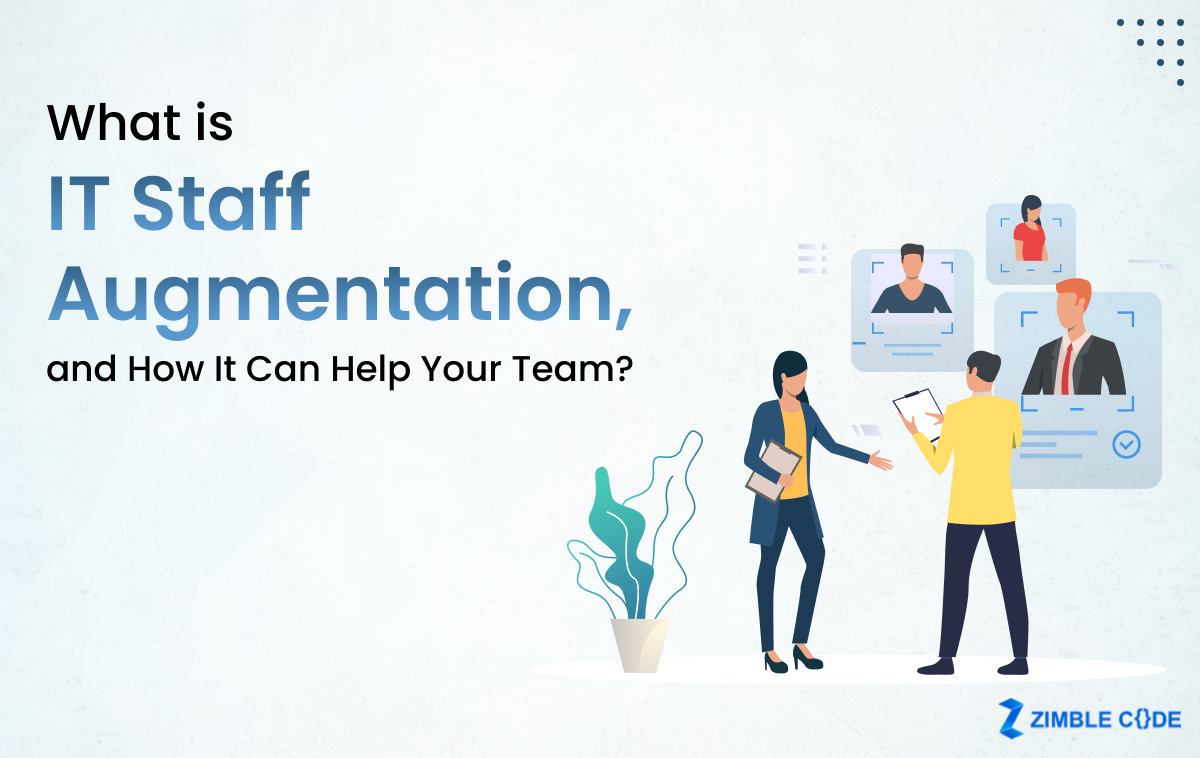


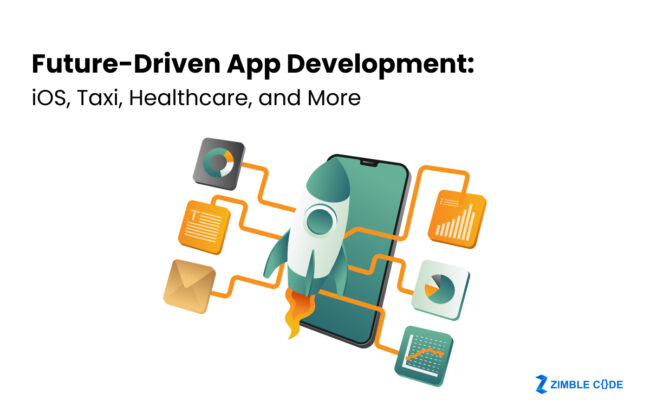
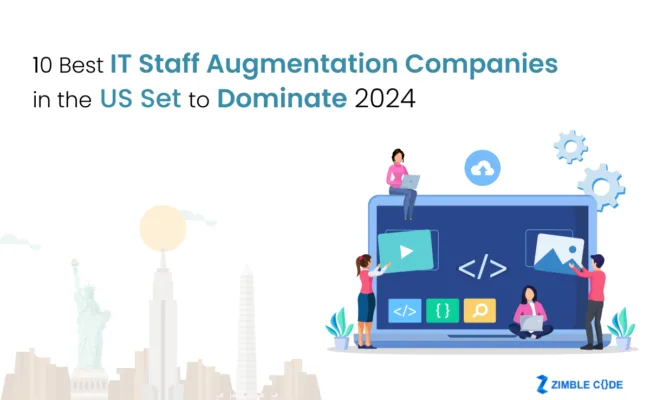


Leave A Comment